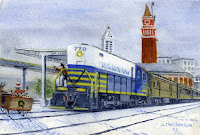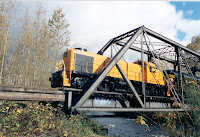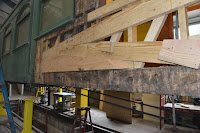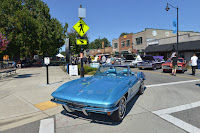The Mountains to Sound Greenway Trust has recognized Northwest Railway Museum Registrar Cristy Lake for her contributions to the Greenway.Lake was awarded the prestigious Jim Ellis Spirit Award at the Greenway's annual dinner (click to watch a video of the presentation), which recognizes her tireless dedication to the preservation of Snoqualmie Valley and Regional Heritage. Some of her recent achievements include her contributions to the Trust's National Heritage Area Advisory Committee, preservation of local heritage through her work as Assistant Director of the Snoqualmie Valley Historical Museum, and her recent efforts to preserve the collection of the Bellingham Railway Museum following their unexpected closure.
The Jim Ellis Spirit Award honors the example that he set from the very beginning of the Greenway, recognizing individuals who embody the Greenway values of collaboration, inclusion, trustworthiness, positivity, and pragmatism.
Jim Ellis was active in the community for much of his adult life and focused on public works and nature. He served on the University of Washington Board of Regents; as a proponent of Forward Thrust bond measures that established parks, swimming pools, preserved farmland, established the beginning of the Burke Gilman Trail on the right of way of the Seattle, Lake Shore and Eastern Railway, built the Washington Trade and Convention Center, and more; and his efforts helped create a new kind of government and for this he was often called the father of Metro. He retired as a municipal bond lawyer from Preston, Gates and Ellis and is best known for his instrumental role in the establishment of the Mountains to Sound Greenway, which was recently designated a National Heritage Area. Mr. Ellis passed away in 2019 at the age of 98.
Cristy is the Collections Registrar for the Northwest Railway Museum, and also serves as the Assistant Director of the Snoqualmie Valley Historical Museum. She has been active in the field of heritage for all of her adult life, and is a graduate of Whitman College in Walla Walla and the University of York in York, UK.
Congratulations Cristy!






























































